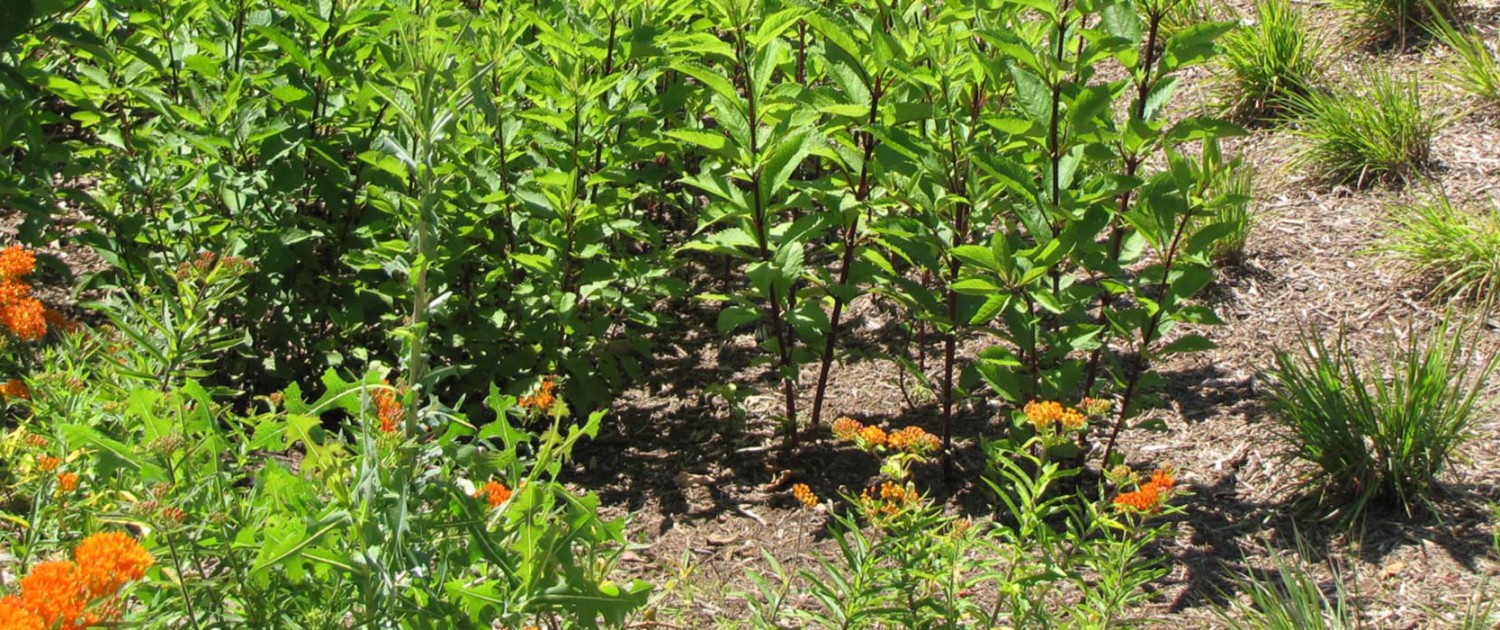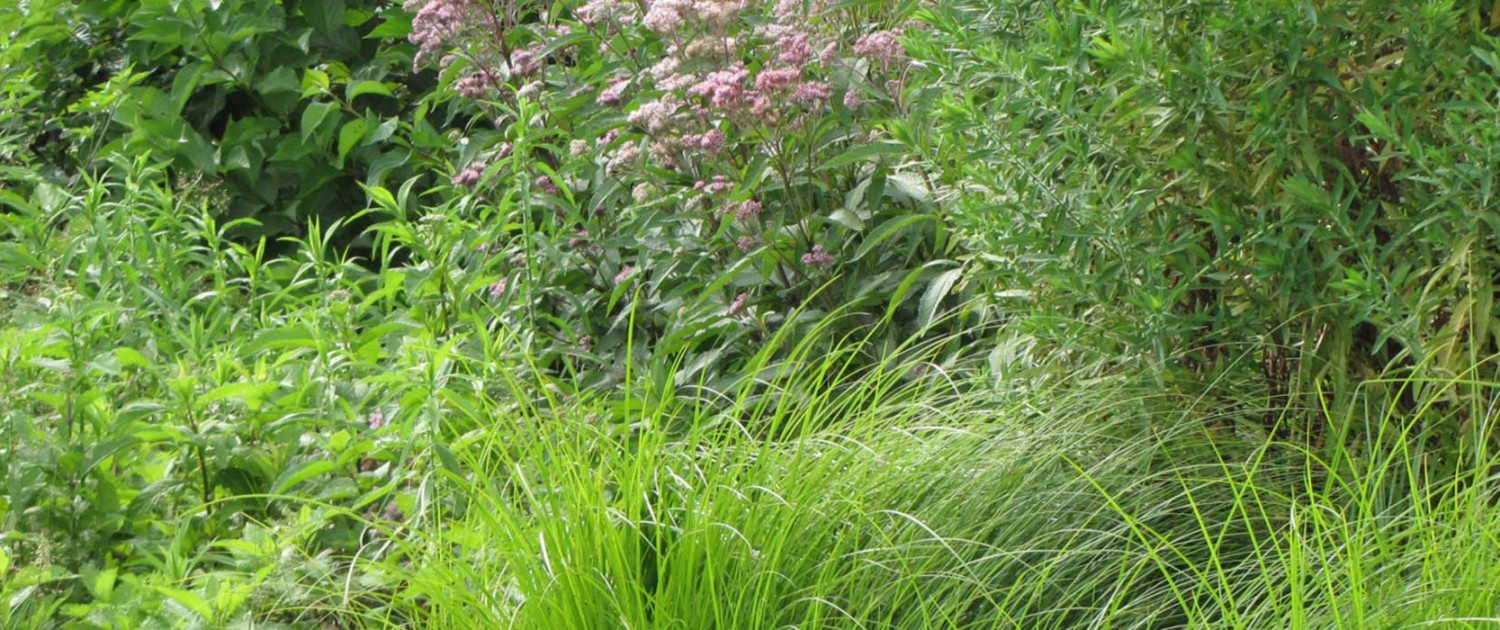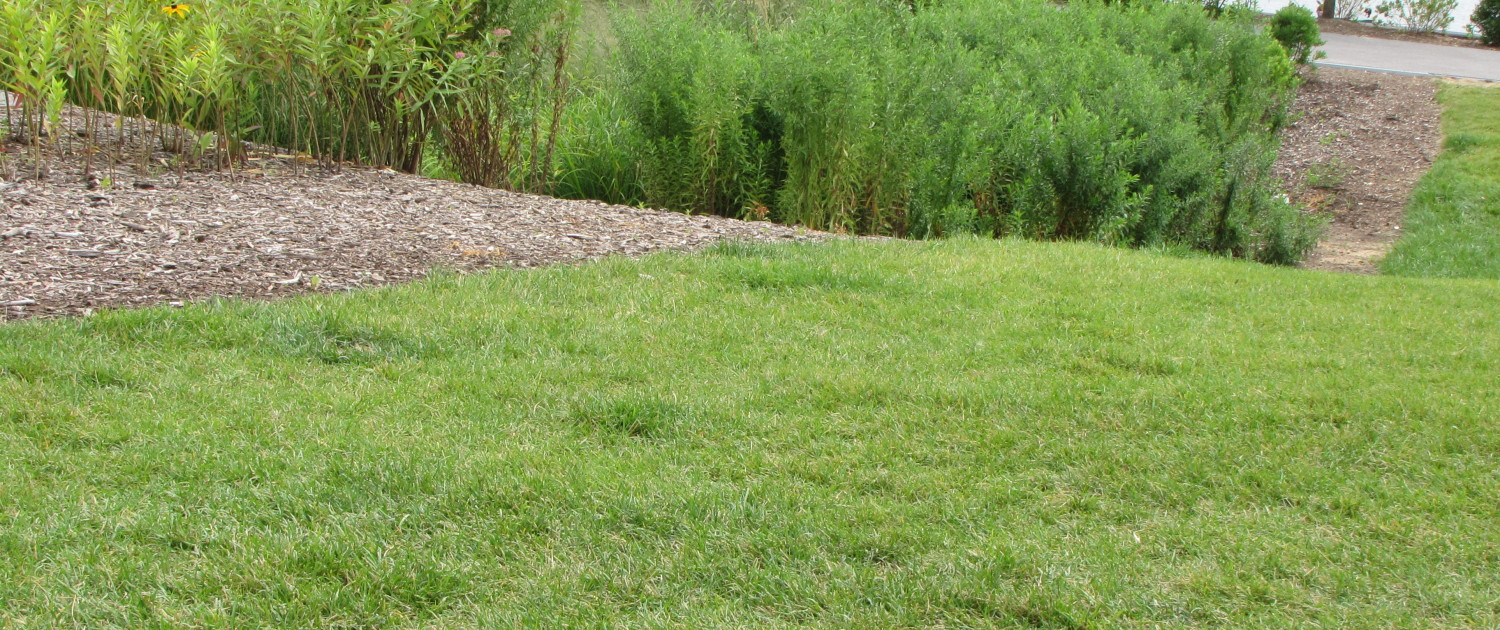Rain Gardens
The park is landscaped with native plants and has several ecological features, including rain gardens and a bio-edge. Rain gardens collect and hold rain water and storm water runoff so that it can soak into the ground instead of flowing into storm drains or along the surface of the land. Rain gardens help prevent erosion, water pollution, and flooding that diminishes groundwater. In addition, through the process of transpiration, rain garden plants return water vapor into the atmosphere.
The rain gardens in the park are located at the intersection of the paths that crisscross the park. They are planted with native shrubs and grasses including Joe Pye Weed, Little Blue Stem, New England Aster, Upright Sedge, Little Henry Sweet-Spire, Arrowroot Viburnum, Butterfly Milkweed, and many others. Native plants are recommended for rain gardens because they generally do not require fertilizer and are more tolerant of the local climate, soil, and water conditions.




